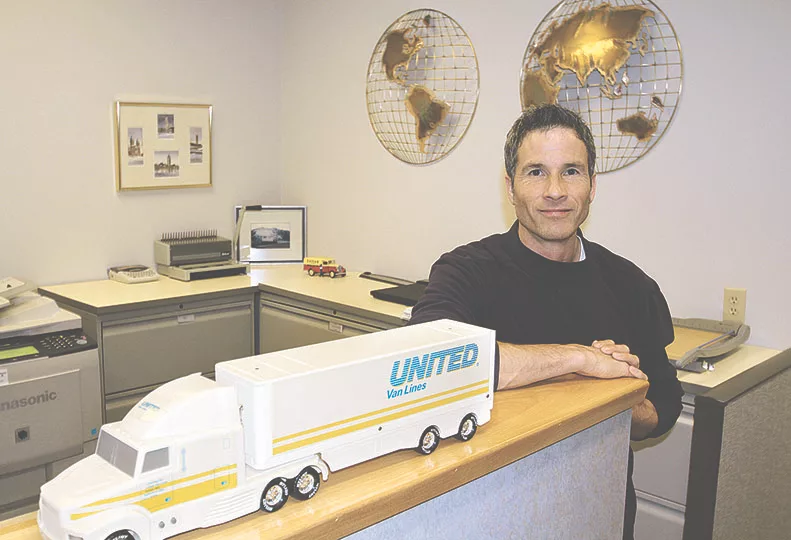
Home » Most small companies in Spokane area see health plan costs increase
Most small companies in Spokane area see health plan costs increase
Groups of under 50 workers affected by age-based rates

January 30, 2014
Spokane-area businesses with fewer than 50 employees are seeing some of the larger hikes in employer-sponsored health plan premiums this year, though it depends on factors such as the insurance carrier and employees’ ages, brokers say.
As individuals and employers inch closer to full implementation of the Patient Protection and Affordable Care Act, called Obamacare informally, average increases for small-group employers here renewing plans in 2014 are in the range of 12 percent to 15 percent. Companies with between 50 and 100 employees are seeing around 11 percent to 12 percent increases on average.
Meanwhile, large companies with more than 100 workers typically aren’t seeing rate hikes with renewals.
Mercer, a benefits consulting firm that conducts a national survey of employer-sponsored health plans, found that most Washington state employers expected their 2014 costs to rise by 8.5 percent. The company says Idaho respondents estimated a nearly 5 percent increase.
Nationally, Mercer says most employers predicted a 5.2 percent increase in health benefit cost this year.
For the Spokane area, some small-group businesses that predominantly have workers age 50 and above are seeing closer to between a 15 percent and 20 percent hike, or even higher, benefit advisers say.
One variable significantly affecting individual insurance and small-group employer plans this year is a methodology change under Obamacare in calculating age-based rates for those plans, says Mark Newbold, a principal and employee benefits adviser with Moloney+O’Neill Benefits LLC, in Spokane.
Younger people who typically are healthier are assigned less expensive rates as a lower-risk group, but rates ratchet upward for older employees under the new methodology, rather than more of an age-averaging calculation that was applied previously for small-group employers, Newbold says.
“Now, for individuals and group plans of 50 or fewer employees, they’re requiring each age be assigned a rate,” Newbold says. “The methodology prior to Jan. 1 used to rely on a blended age rating. We’d take the overall demographics of the group and use age banding, usually in five-year bands, and solve a rate.”
Beth Viren, a manager at Viren & Associates Inc., a Spokane-based financial planning and employee benefits advisory company, says she would describe the employer benefits landscape for small-group businesses as being in a state of flux under the age-rating methodology change. While she arranges renewals for businesses each month of the year, she says recent scenarios have ranged from rate decreases to a 45 percent increase.
“This year, it’s hard,” she says. “The way we’ve received the rate is completely different.”
She adds, “In the past, we had age bands, and we knew before that if someone reached a birthday that had a zero or five, that might affect the amount, but it was still clumped together. Now, we’re seeing the prices for every single age, and it’s concerning to me, because it’s very evident how much it costs to insure older workers.”
She says her work today also involves helping an employer determine how to spread costs out evenly if they ask employees to pay a portion of premium costs.
“If you pass that on, you can’t discriminate per employee,” she says. “We work on how to help the employer determine how to spread that out, so employees are paying the same amount, even though the employer is paying much more of the individual employee cost.”
Newbold says employers today typically pay about 75 percent of health plan costs, and workers pay a portion of premiums.
“That’s pretty consistent, but there is a trend of asking employees to pay more toward the premium,” Newbold says. “There are a few still paying 100 percent but most are backing off and asking employees to pay a fixed amount, particularly in small groups.”
Jeff Skeesick, vice president of Inova LLC, a Spokane insurance agency, says some small businesses can participate in insurance plans offered through associations to which they belong. Typically, companies that take that approach aren’t being affected by the individual age-rating change for small groups.
“Associations are comprised of many smaller businesses; it’s considered a large group, so our rates are the same for every employee regardless of their age,” Skeesick says.
Inova is a wholly owned subsidiary of Spokane-based employee-benefits organization Associated Industries. However, he adds that he doesn’t work only with businesses that are members of Associated Industries, and that he also has seen a wide swing in rates applied this year for small groups, largely based on the age rating. On behalf of small business clients, he often submits employer benefit proposals to various insurance carriers, including Premera Blue Cross, Group Health, and Aetna.
“What they’re doing with the small group is, the rating is lower for the young people because they’re a better risk than us old folks,” says Skeesick, who is 66. As an example, Skeesick says his insurance under an association large-group rating through Associated Industries currently costs $632 a month. He says a similar plan for him based on an individual age rate at Premera would be $767 a month, but if he were 20, that cost would be $162.
Skeesick adds, “I’ve seen everything from a flat rate to a high increase of 52 percent for employers with less than 50 employees. In some cases, we moved a company to Premera, and we got a flat rate. Premera is the hot one right now with the small-group market.”
He adds that he’s seen up to a 35 percent savings moving some employers to Premera. “My question is, is that sustainable at renewal time?”
Spokane Valley-based Chipman Moving & Storage is an example of an employer here that covers 100 percent of its employees’ premiums. It has 18 full-time workers, whose health plan includes a $1,500 deductible. The company, located at 2704 N. Moore in the Spokane Business & Industrial Park, has absorbed a double-digit percentage increase in rates in most of the past 10 years, says Chipman controller Sam Thomas.
For this year, Thomas says the company at first faced a hike of 10 percent to 11 percent in health plan costs under early proposals developed by its broker, Moloney+O’Neill Benefits, but the company worked with Newbold to tweak options that ultimately resulted in a 16 percent decrease.
“Initially, we were told we’ll have to cancel the previous policy we had because there were a couple of things not in compliance with ACA,” Thomas says. “They said, ‘We’ll provide plans that will be similar with the same insurance company,’ and they were at about a 10 to 11 percent increase in premium.”
Thomas attributes this year’s decrease mainly to the company joining Associated Industries, which removed specific age-related rating for its employees, under a different insurance carrier that offered roughly the same health benefits coverage.
“For us, it worked out pretty well,” Thomas says.
Both Skeesick and Newbold say that Premera, which is the Inland Northwest’s largest health plan provider, has been aggressive about going after the small-group insurance market this year.
For sign-ups and renewals so far this year, Premera small-group insurance plan coverage initially included a preferred network provider arrangement with the for-profit Spokane-based Rockwood Health System, which operates Deaconess Hospital, Valley Hospital and Rockwood Clinic PS, a multispecialty practice with clinics throughout the Spokane area. Rockwood Health System is a unit of Franklin, Tenn.-based Community Health Systems Inc.
However, Eric Earling, a Seattle-based spokesman for Premera, says that effective Feb. 1, the insurance company’s preferred provider network for individual and small group customers also will include Spokane-based nonprofit Providence Health Care. Providence operates Providence Sacred Heart Medical Center & Children’s Hospital, Providence Holy Family Hospital, and a number of other health care facilities and services in Eastern Washington. Providence Health Care is a unit of Renton, Wash.-based Providence Health & Services.
Earling says for small-group employers that renewed insurance plans effective Jan. 1, they will be able to go to Providence providers as of early February, as well as to Rockwood system providers, for in-network benefit levels.
Also at Premera, spokeswoman Melanie Coon says one newer trend for employer-provided health care plans is that ACA requirements have set a minimum standard for the health benefits that need to be included in every health plan. What are considered essential benefits under ACA include coverage for emergency room, prescription drugs, maternity care, pediatric, dental, and behavioral health, she says.
Coon says this rule has placed upward pressure on rates because in most cases, the new plans have more benefits than in the past. However, she says Premera also is offering a new small-group wellness incentive that can provide a 7.5 percent rate discount if employees sign up to participate in wellness activities and screening.
Newbold says that under certain conditions, some small-group employers might qualify for a health care tax credit for up to 35 percent of employer contributions if they have fewer than 25 employees and pay average annual wages of less than $50,000 per employee.
Latest News Health Care
Related Articles
Related Products


_web.webp?t=1764835652)
